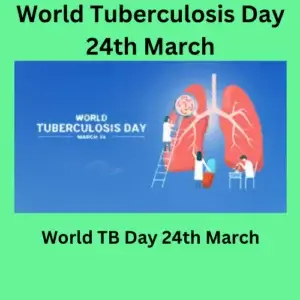Tuberculosis ,World Tuberculosis Day, World TB Day 24th March Important
World Tuberculosis Day or World TB Day is observed every year on March 24 globally. This annual event commemorates the date in 1882 when Dr. Robert Koch announced his discovery of Mycobacterium tuberculosis, the bacillus that causes tuberculosis (TB). This was a first step towards diagnosing and curing tuberculosis. World Tuberculosis Day can be traced … Read more
